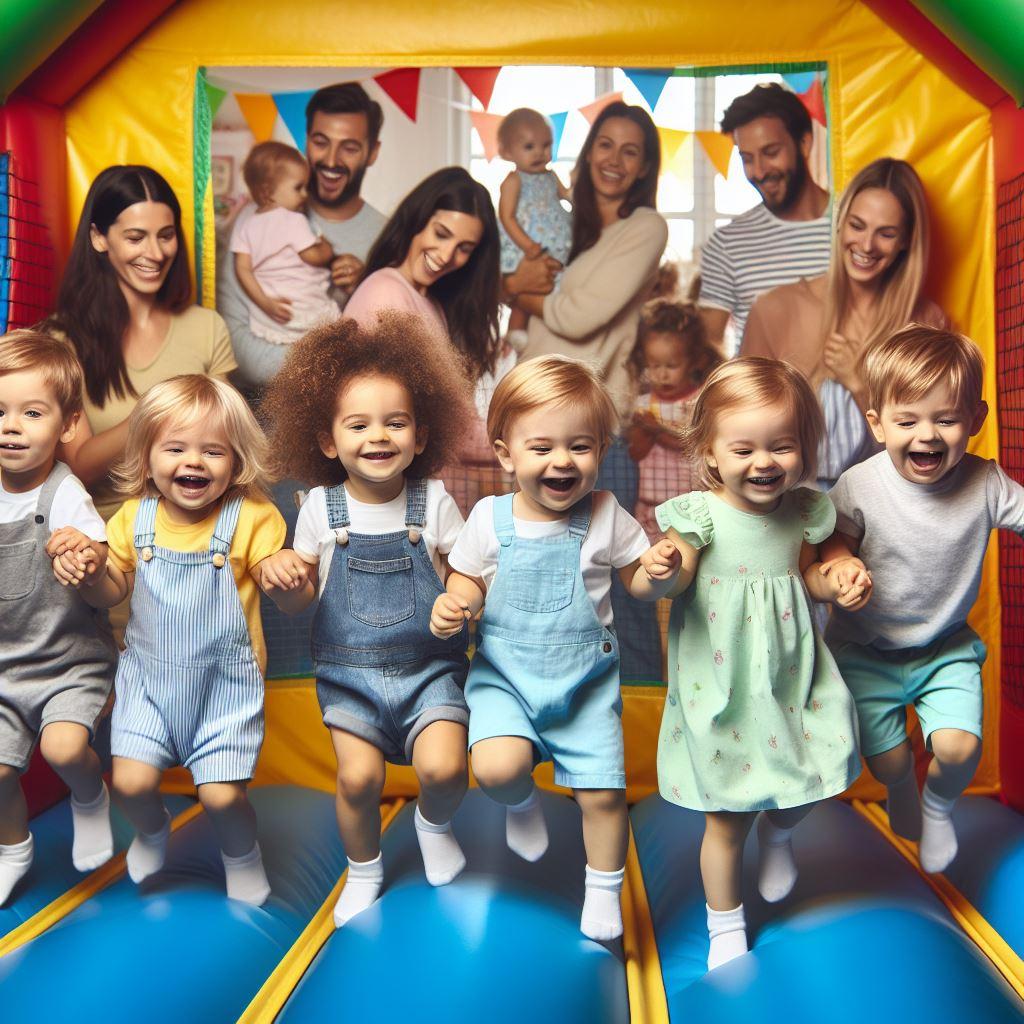How Can I Prevent Injuries in a Toddler Bounce House

Bounce houses are a recipe for pure joy for toddlers. The exhilarating jumps, the giggles echoing within the brightly colored castles and fantastical creatures – it's a guaranteed recipe for happy playtime. But with all that bouncing energy, safety becomes paramount. As a parent in the United States looking to purchase a bounce house for your little one, ensuring a safe bouncing experience is a top priority.
Key Highlights
-
Safe Bounce for Toddlers: Ensure a safe bouncing experience for toddlers aged 4-8 by following proper setup and supervision guidelines.
-
Bounce House Safety Tips: Minimize risks with proper anchoring, limited users, no flips, and mesh walls for supervision.
-
Finding the Perfect Bounce: Choose reputable bounce house providers who prioritize safety and follow ASTM International standards.
Picture Credit Goes to HappyJump Bounce House and Inflatable Water Slides
This article equips you with the knowledge to minimize risks and create a joyful, bounce-filled environment for your toddler between 4 and 8 years old and steps for choosing the perfect bounce house.
Setting the Stage for Safety
Before the first jump, let's focus on setting up your bounce house for maximum safety:
-
Location, Location, Location: Choose a flat, level surface free of rocks, sticks, or other hazards. Avoid setting it up under trees (watch out for falling branches!), near power lines, or on concrete. Opt for a grassy area that provides some cushioning in case of a fall.
-
Anchoring Away: Ensure the bounce house is properly anchored using stakes or sandbags, following the manufacturer's instructions. This prevents wind gusts from turning your happy place into a bouncy balloon!
-
Inflation Matters: Don't over inflate the bounce house. Refer to the manufacturer's guidelines for proper inflation levels. An overly inflated bounce house can lead to injuries upon landing.
-
Entrance and Exit Safety: If your bounce house has an entrance/exit ramp, make sure it's secure and slip-resistant. Consider placing a soft landing mat at the bottom of the ramp for additional cushioning.
-
Mesh Marvel: Look for bounce houses with mesh walls for maximum visibility. This allows you to easily keep an eye on your little one while they bounce.
Rules of the Bounce
Now that your bounce house is a safe haven, let's establish some ground rules for maximum bouncing fun:
-
Size Matters: Toddlers under 4 years old might not have the coordination and balance to navigate a bounce house safely. It's best to wait until they're a bit older before letting them loose in the bouncy wonderland.
-
One at a Time: Collisions are a major cause of injuries in bounce houses. To avoid this, limit the number of children bouncing at once. Ideally, it's best to have only one toddler bouncing at a time.
-
Supervision is Key: Never leave your toddler unattended in a bounce house. Even with all the safety measures in place, constant supervision is crucial.
-
Shoe Removal: Shoes can be slippery and cause falls. Make sure your toddler removes their shoes, socks are okay, before entering the bounce house.
-
No Flips, No Flops: While tempting, somersaults and flips can lead to serious injuries. Establish clear rules about no roughhousing, pushing, or flips inside the bounce house.
-
Jewelry-Free Zone: Necklaces, bracelets, or any dangling jewelry can pose a choking hazard. Make sure your toddler removes any jewelry before bouncing.
-
Hydration Hero: Bouncing can be thirsty work! Keep a water bottle handy and encourage frequent water breaks, especially on hot days, to prevent overheating.
Bouncing Buddies
If you're planning a bounce house party for your toddler, here are some additional tips to ensure everyone has a safe and enjoyable time:
-
Age Grouping: If you do allow multiple toddlers in the bounce house, try to group them by age and size. This minimizes the risk of a smaller child getting pushed or bumped by a bigger one.
-
Designated Bouncer: Consider assigning an adult as the "bounce house bouncer" whose sole responsibility is to supervise the activity and enforce the safety rules.
-
Take Turns: With multiple toddlers waiting for their turn, establish a take-turns system to avoid overcrowding and ensure everyone gets a chance to bounce.
Addressing Concerns
Even with the best precautions, accidents can happen. Here's how to be prepared:
-
First-Aid Kit: Always have a well-stocked first-aid kit on hand to address any minor bumps or scrapes.
-
Emergency Contact Information: Keep a list of emergency contact information readily available in case of a more serious situation.
Additional Resources:
For further information on bounce house safety, you can refer to the following resources:
Finding the Perfect Bounce
Now that you're equipped with safety knowledge, it's time to find the perfect bounce house for your toddler! Here are some tips:
-
Research is Key: Search online for reputable bounce house manufacturers or rental companies in your area.
-
Safety First: Look for companies that prioritize safety and follow ASTM International standards for inflatable play equipment.
-
Read Reviews: Checking online reviews from previous customers can provide valuable insights into a company's service and safety record.
-
Ask Questions: Don't hesitate to ask potential bounce house providers questions about their safety procedures, cleaning protocols, and age recommendations for their bounce houses.
By following these steps, you can find a bounce house that provides a fun and safe environment for your toddler's bouncing adventures.
The Final Bounce
By following these safety tips and being a vigilant supervisor, you can turn your bounce house into a haven for joyous, safe bouncing for your toddler. Remember, a little planning goes a long way in ensuring a bounce-filled day without any bumps along the way.
الأقسام
إقرأ المزيد
Lentoria Condo is an impending luxury residential development that promises a mixture of modern architectural excellence, tranquil living spaces, and world-class amenities. Located in one of the very sought-after districts, the condo provides a serene escape from the hustle and bustle of city life while being conveniently near essential urban amenities. With a design philosophy dedicated to...

Moving your furniture to Hawaii? JNR Global Logistics offers seamless solutions for shipping your cherished belongings. Our experienced team handles every aspect of the process, from packing and crating to ocean freight and customs clearance. We understand the unique challenges of shipping furniture to Hawaii and provide reliable, cost-effective services. Enjoy peace of mind knowing your...



